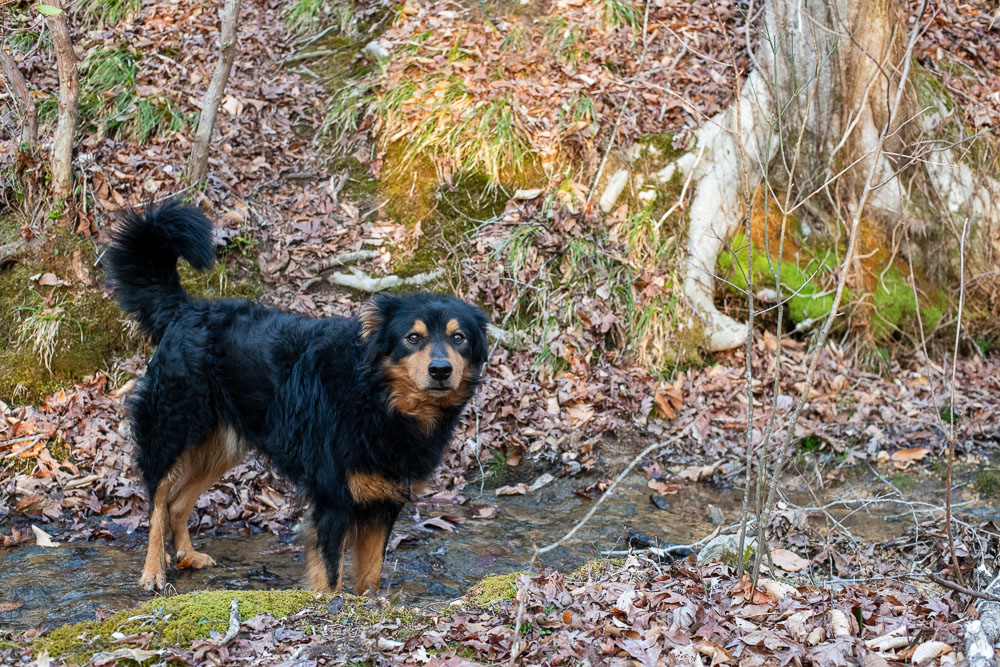
Here are some photos from out in the yard this morning with Deuce. Deuce is 5G IESR Walker’s Deuce, by IESR Walker’s Rustie out of IESR Walker’s Sally

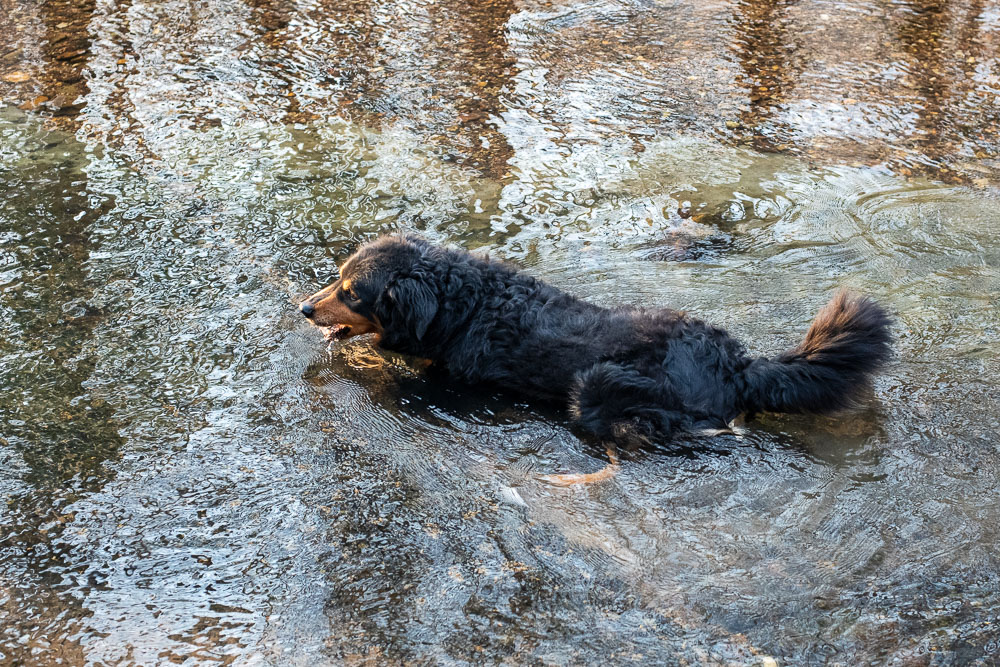
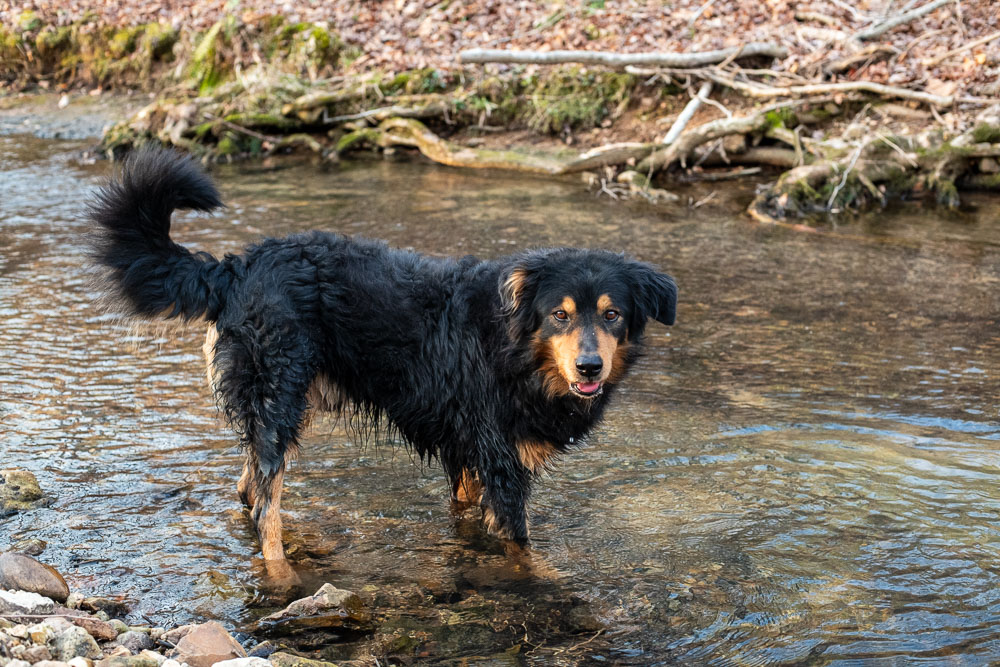
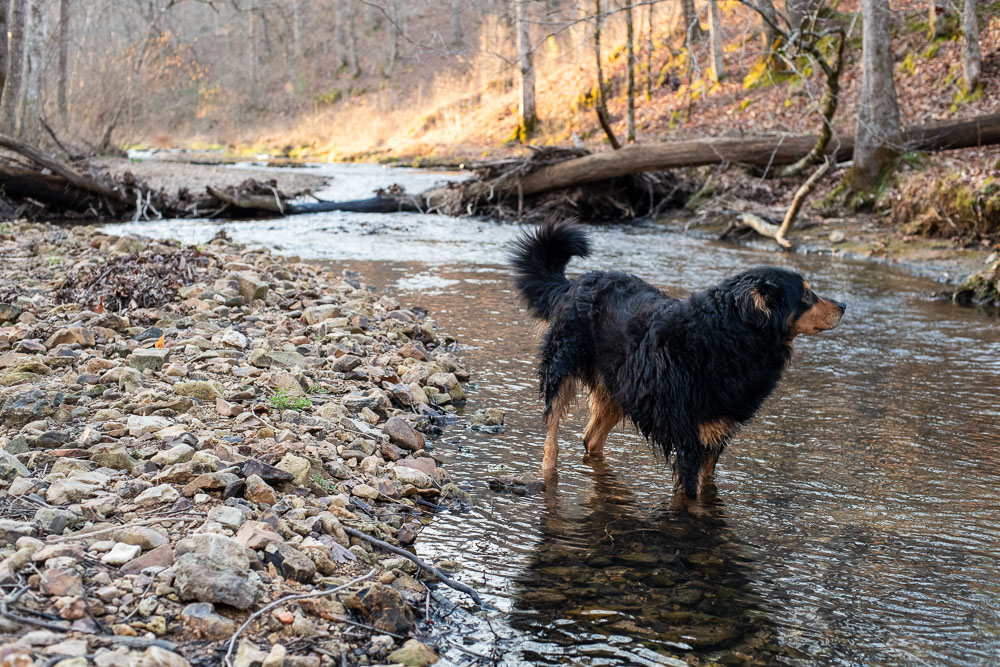
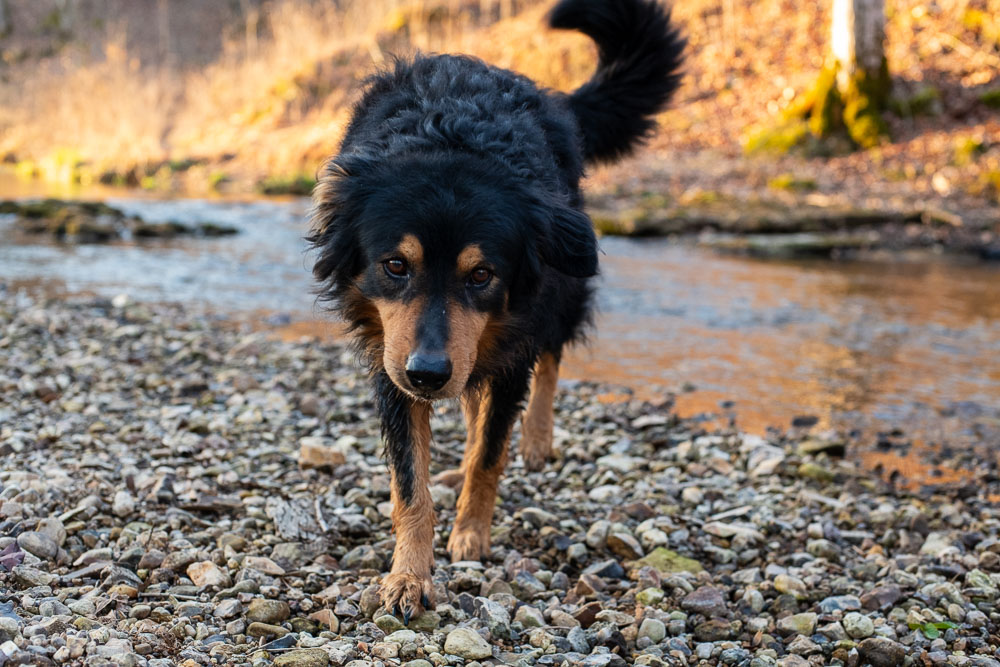

Here are some photos from out in the yard this morning with Deuce. Deuce is 5G IESR Walker’s Deuce, by IESR Walker’s Rustie out of IESR Walker’s Sally






Here’s a general overview of where Black and Tan English Shepherds typically fall on the territorial/reactive/aggressive spectrum:
Ideally, your personal experiences with Black and Tan English Shepherds will align well with the general temperament traits of the bloodline. But it’s important to remember that while bloodline tendencies are a good guideline, individual personality, training, socialization, and environment also play significant roles in shaping a dog’s behavior.
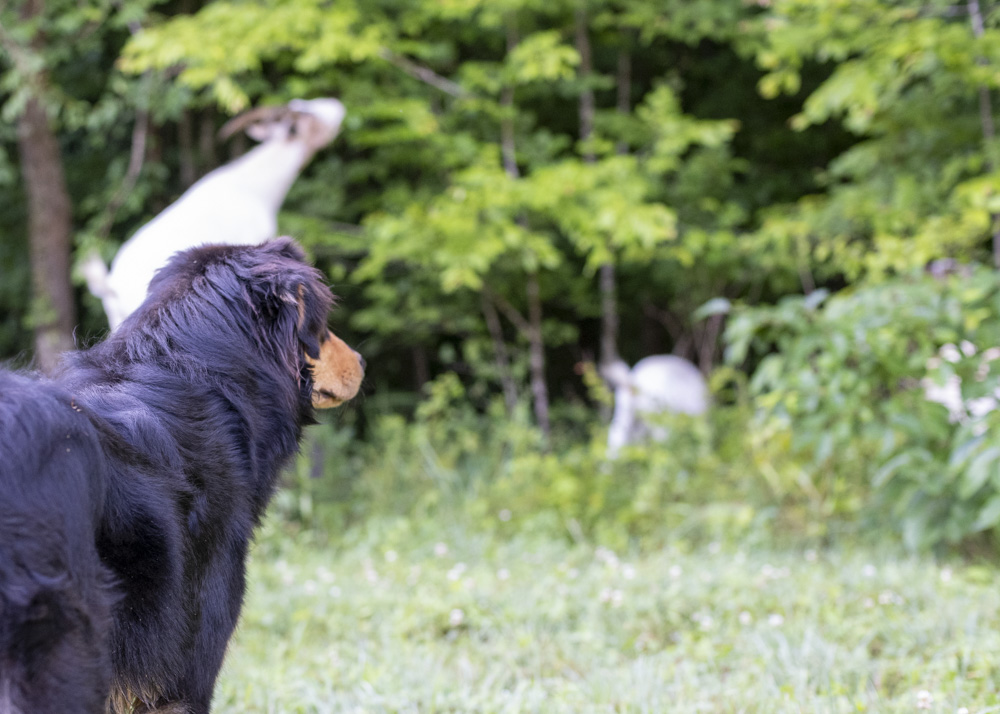
“Goat Dogs,” written by Major Jesse Ursery, originally published on Pages 29-30 of the English Shepherd Club of America Who’s Who Breeder Manual, provides an insightful narrative on the author’s lifelong experiences with English Shepherds. The article focuses on the breed’s versatility, particularly in herding and guarding livestock. Here’s an analysis of its key themes:
1. Early Experiences and Fond Memories:
Ursery’s first encounter with English Shepherds was in his childhood, with a dog named Fan owned by his father. He fondly recalls Fan’s exceptional abilities in hunting and herding, setting the stage for his lifelong admiration for the breed.
2. Fan’s Versatility and Skills:
Fan, the black and tan English Shepherd, is described as an adept tree dog and an efficient herder, capable of driving in milk cows and grabbing any animal when commanded. These anecdotes highlight the breed’s intelligence, obedience, and versatility.
3. Personal Bond and Adventures:
As a child, Ursery shares his adventures with Fan, emphasizing the dog’s understanding and adaptability to his preferences, such as only chasing ground animals when with him, knowing he didn’t have a gun. This aspect illustrates the breed’s intuitive nature and strong bond with humans.
4. Tragic Loss and New Beginnings:
The story of losing his first English Shepherd to rabies, and later acquiring another from Mr. Tom D. Stodghill, reflects the enduring appeal of the breed to Ursery, even amid setbacks.
5. Integrating English Shepherds into Farm Life:
After purchasing a farm in Arkansas, Ursery recounts buying a pair of black and tan English Shepherds from Stodghill and training them with goats. This unique training method showcases the breed’s innate herding instincts and their ability to bond closely with livestock.
6. Guarding and Protecting Livestock:
The English Shepherds’ dedication to the goats is evident in their refusal to leave them, even for feeding. Ursery also mentions their fearlessness in protecting the stock, emphasizing their loyalty and protective instincts.
7. Challenges in Managing the Dogs:
The necessity to pen the dogs to prevent them from returning to the goats illustrates their strong herding instinct and the challenges in managing such dedicated working dogs.
Conclusion:
“Goat Dogs” by Major Jesse Ursery is a poignant and personal account that showcases the English Shepherd’s remarkable abilities in herding and guarding. The article not only reflects on the breed’s functional attributes but also highlights the deep emotional connection and mutual understanding between the dogs and their owner. Ursery’s narrative serves as a testament to the English Shepherd’s invaluable role in rural life and their adaptability to various working environments.
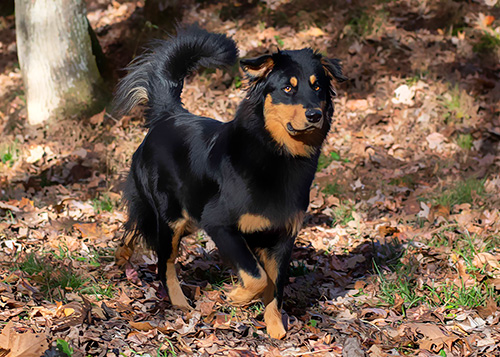
“Pete The Mountain Dog,” written by Mr. Walter W. Oglivie of Allisona, Tennessee, was originally published c. 1950 in the English Shepherd Club of America Who’s Who Breeder Manual on Pages 25-27. The article provides a nostalgic and detailed account of Oglivie’s experiences with English Shepherds, specifically a dog named Pete, and their role in his farming and cattle herding activities. Here is a narrative analysis of its key themes and insights:
1. Early Experiences and the Influence of Uncle Pete:
Oglivie recalls his early experiences with cattle herding alongside Uncle Pete in the Cumberland Mountain range. Uncle Pete’s expertise in the region and his pair of “Mountain Shepherd Dogs” significantly influenced Oglivie’s perception of the breed. This backstory sets a foundation for his appreciation of English Shepherds’ herding abilities.
2. Pete’s Training and Skills:
The dog Pete, whom Oglivie brought home from Uncle Pete, exhibited exceptional herding skills and an almost human-like understanding of cattle and sheep. The author’s admiration for Pete’s intelligence and working ability is a central theme, emphasizing the breed’s inherent instincts and capabilities.
3. Comparison with Other Breeds and the Unmatched Qualities of Pete:
Oglivie compares his subsequent experience with various stock dogs to Pete, finding none that matched Pete’s caliber. This comparison highlights the exceptional qualities he found in Pete, setting a high standard for working dogs.
4. Introduction to Registered English Shepherds:
About twelve months before writing the article, Oglivie discovered registered black and tan English Shepherds through an advertisement. His visit to the Blankenships in Murfreesboro, Tennessee, marked the beginning of his involvement with the breed. He acquired a dog named Bozo and a female named Shag, noting their resemblance to Pete.
5. Training and Working with English Shepherds:
Oglivie describes his experience working with his new English Shepherds, especially in herding steers. He notes their natural heeling instinct and intelligence, along with the training he provided, which made them effective working dogs. Oglivie speaks specifically to using his dogs to drive steers across narrow mountain paths and to load the livestock into rail cars.
6. Future Prospects and Promotion of the Breed:
An upcoming rodeo in Franklin, Tennessee, where the Blankenships and Oglivie planned to exhibit the working capabilities of their English Shepherds, is mentioned. This event represents a significant opportunity to showcase the breed’s abilities to a wider audience.
7. Personal Life and Connection to Farming:
Oglivie shares insights into his family life and farm operations, illustrating his deep connection to the land and farming lifestyle. His fondness for riding horses and the integration of black and tan English Shepherds into his daily activities on the farm are highlighted.
Conclusion:
“Pete The Mountain Dog” is a compelling narrative that showcases the English Shepherd’s exceptional working abilities and the deep bond formed between these dogs and their owners. Oglivie’s personal story and experiences provide a vivid portrayal of the breed’s versatility, intelligence, and adaptability in farming and herding contexts. The article serves as a valuable first-person narrative of the enduring value and significance of English Shepherds in rural American life.
Read more about the history of Black and Tan English Shepherds

“The Blankenships’ Best Friend,” written by John Blankenship, is an article that outlines the history and significance of the Black and Tan English Shepherd dogs, particularly focusing on the Blankenship family’s experience with these dogs in Tennessee. The article was originally published in the English Shepherd Club of America Who’s Who Breeder Manual in the 1950s.
Key points from the article include:
Historical Association with Farming: The Black and Tan English Shepherds, referred to as “The King of the Cattle Dogs” and the Gold Nugget Strain, are associated with progressive farming in Tennessee. They are linked with the name and legacy of John and Pauline Blankenship, signifying their importance in the history of the family and the region.
Family Tradition: The article recounts Charles B. Blankenship’s use of Black and Tan family pets for herding and other farm duties in Wilson County, Tennessee, about seventy years prior to the writing. It also mentions the dogs’ presence in the lives of John Blankenship’s wife’s family, tracing their origins to Virginia and North Carolina.
Breeding and Utility: John Blankenship details his journey into dog breeding, starting with the acquisition of a registered English Shepherd named “Tex” in 1946. He emphasizes the dogs’ multifaceted roles as companions, guardians, and working dogs on the farm.
Characteristics and Achievements: The article highlights various dogs, such as “Old Shep,” “Duchess of Windsor,” and “Lassie,” noting their skills in herding, protecting livestock, and vermin control. The dogs’ lineage, going back 100 years, signifies the depth of the breeding program.
Modern Farming and the Shepherd Dog: Blankenship acknowledges the changing landscape of farming, with mechanical farming replacing traditional methods, and notes the increasing importance of Shepherd dogs in managing livestock and serving as companions and protectors.
Bloodline Success and Popularity: The Gold Nugget Strain of Black and Tan English Shepherds is celebrated for its excellence, with the Blankenships’ successful breeding program distributing puppies across various states.
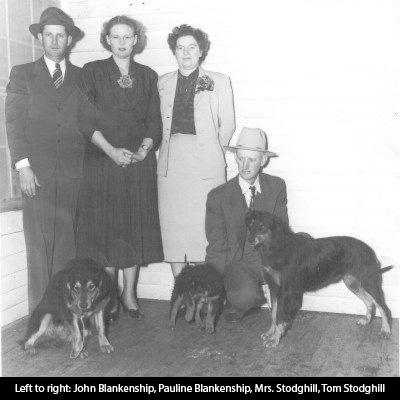
The newspaper article “Some Dogs Said True English Shepherds” offers insight into the heritage of the English Shepherd breed, a cornerstone of early 20th-century rural American life. At the heart of the article is Tom D. Stodghill’s journey back to Middle Tennessee. Stodghill came to Tennessee in search of dogs that paralleled those his grandfather had once cherished. His quest, rooted in personal history and a passion for the breed, marks a pivotal moment in the conservation of the English Shepherd.
A significant outcome of Stodghill’s journey was the establishment of the English Shepherd Club of America. This move represented a formal step towards preserving and promoting the breed. The ESCOA played a crucial role in setting standards, registering new bloodlines, and serving as a communal platform for breed enthusiasts.
The Blankenships, noted as the largest breeders of English Shepherds in Tennessee, were instrumental in the breed’s national proliferation. Their initial acquisition of a registered English Shepherd from Stodghill sparked a breeding program that would become synonymous with the breed’s excellence. Their dedication not only maintained the breed’s standard but also enriched its genetic pool.
The article highlights the English Shepherd’s versatility as a working dog capable of herding, guarding, and hunting. These attributes, coupled with their intelligence and obedience, made them invaluable assets on farms. The breed’s adaptability and temperament are celebrated, painting a picture of a dog not just as a working animal, but as a loyal companion and family member. The preservation of the English Shepherd’s characteristics and standards is a central theme. Plans for a breeders’ manual and potential magazine publications suggest a concerted effort to educate and guide future breeding. The importance of maintaining genetic diversity through the registration of unrelated bloodlines is particularly emphasized, showcasing a forward-thinking approach to breed conservation.
Finally, the article encapsulates the breed’s significance in rural American culture, particularly in Tennessee and Texas. This cultural and regional impact highlights the breed’s role beyond mere functionality, embedding it in the social fabric of rural life.
“Some Dogs Said True English Shepherds” is more than an article; it’s a narrative that pulls together the history, challenges, and successes of preserving the English Shepherd breed. It serves as a testament to the dedication of individuals like Stodghill and the Blankenships and stands as an example for future efforts in the conservation of this historic breed. Through their stories, we gain a deeper appreciation of the English Shepherd, not just as a breed but as a symbol of rural American heritage.
Citation: “Some Farm Dogs Said True English Shepherds,” The Rutherford Courier, January 23, 1953

Feeding puppies a specialized puppy formula dog food is crucial for their optimal growth and development.
Here are the reasons and key ingredients to look for:
Balanced Nutrition: Puppies have different nutritional requirements than adult dogs. They need more protein, fat, calcium, and phosphorus for proper growth. Puppy formula ensures these needs are met.
Supports Growth and Development: Puppies grow rapidly, and the right food supports this growth, especially for their bones, muscles, and overall body development.
Energy Needs: Puppies are more active and have higher energy needs. Puppy food has more calories to meet these demands.
Immune System Support: Puppy formulas often contain specific nutrients to strengthen their still-developing immune systems.
Key ingredients to look for in a good puppy formula include:
High-quality, well-balanced puppy food sets the foundation for a healthy adult life.
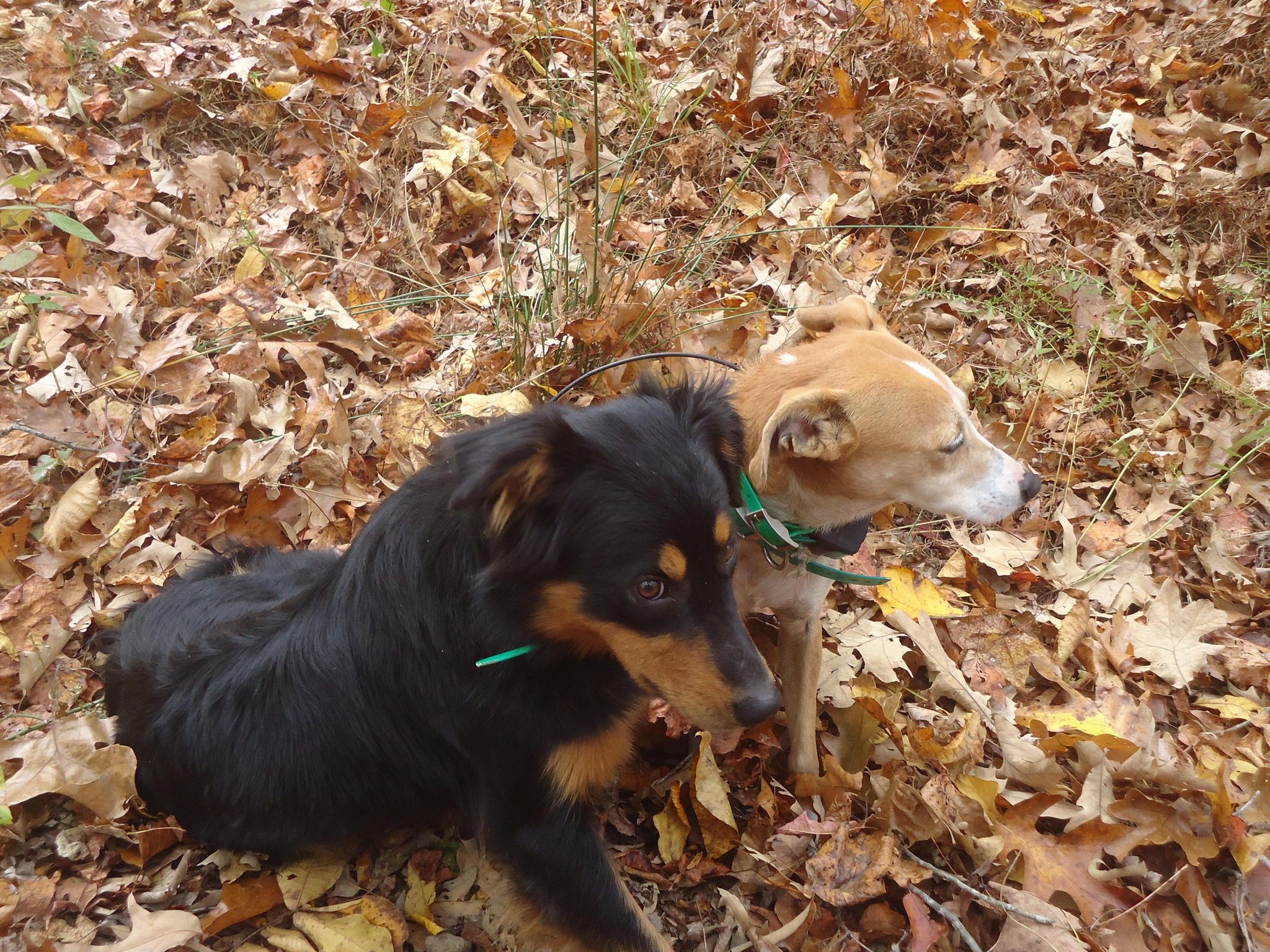
When our ancestors came over the Appalachians, black and tan English Shepherds came with them. It was important for pioneers to have versatile dogs on the farmstead, and early ESBT fit that bill well. Hunting was an critical daily activity.
Keeping our dogs trained in the old ways in an important part of bloodline conservation. Hazie (Rusty x Vixen 2022) is being trained for small game. She already retrieves game, and is on her way to treeing. I was excited when Hazie’s owners approached me, and told me they would use her for hunting. I’m glad to see that she’s filling the niche. Her sire, Rustie Jr., loved to tree squirrels.
Learn about the History of the Black and Tan English Shepherd bloodline.